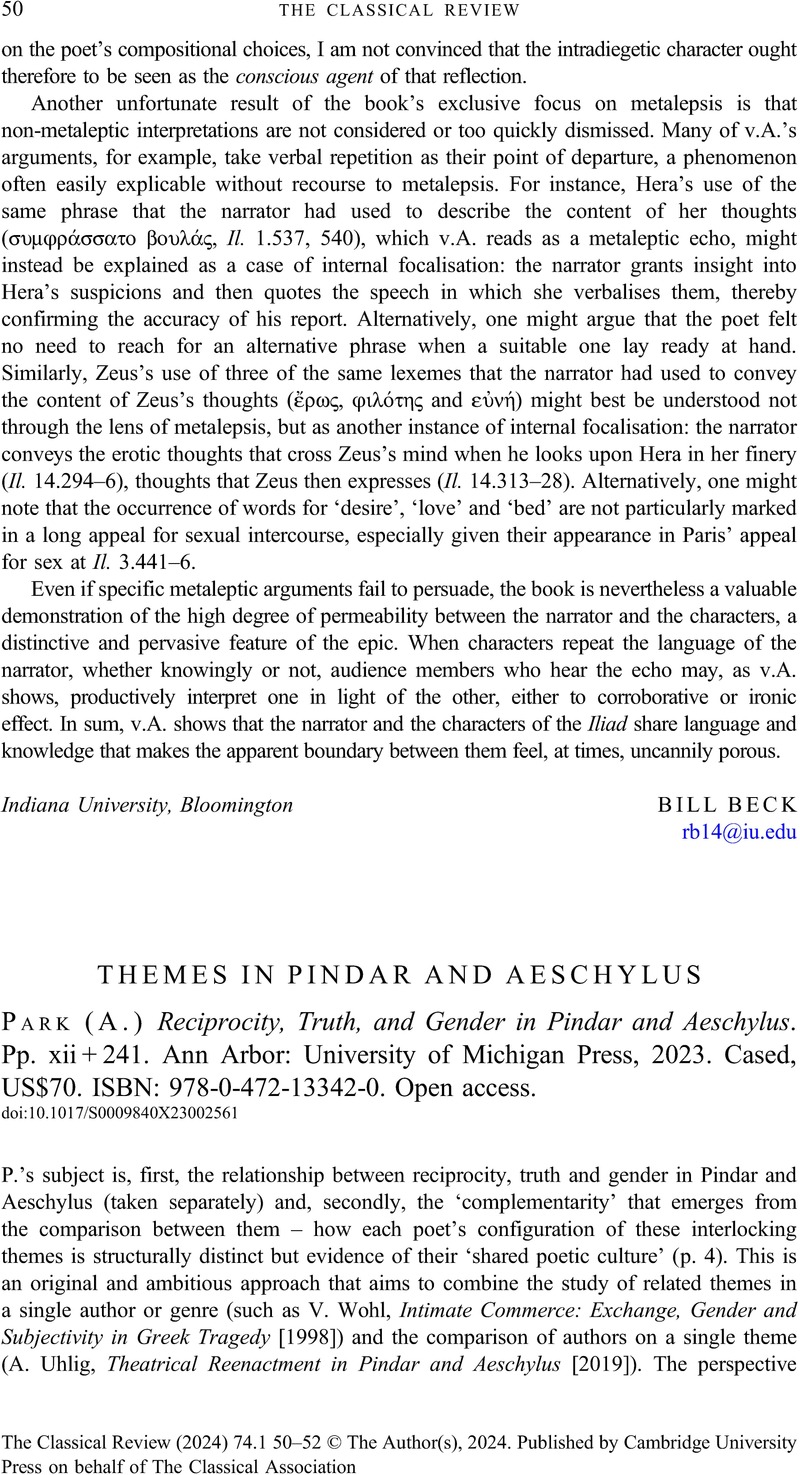No CrossRef data available.
Article contents
THEMES IN PINDAR AND AESCHYLUS - (A.) Park Reciprocity, Truth, and Gender in Pindar and Aeschylus. Pp. xii + 241. Ann Arbor: University of Michigan Press, 2023. Cased, US$70. ISBN: 978-0-472-13342-0. Open access.
Review products
(A.) Park Reciprocity, Truth, and Gender in Pindar and Aeschylus. Pp. xii + 241. Ann Arbor: University of Michigan Press, 2023. Cased, US$70. ISBN: 978-0-472-13342-0. Open access.
Published online by Cambridge University Press: 12 January 2024
Abstract
An abstract is not available for this content so a preview has been provided. Please use the Get access link above for information on how to access this content.

- Type
- Reviews
- Information
- Copyright
- Copyright © The Author(s), 2024. Published by Cambridge University Press on behalf of The Classical Association



